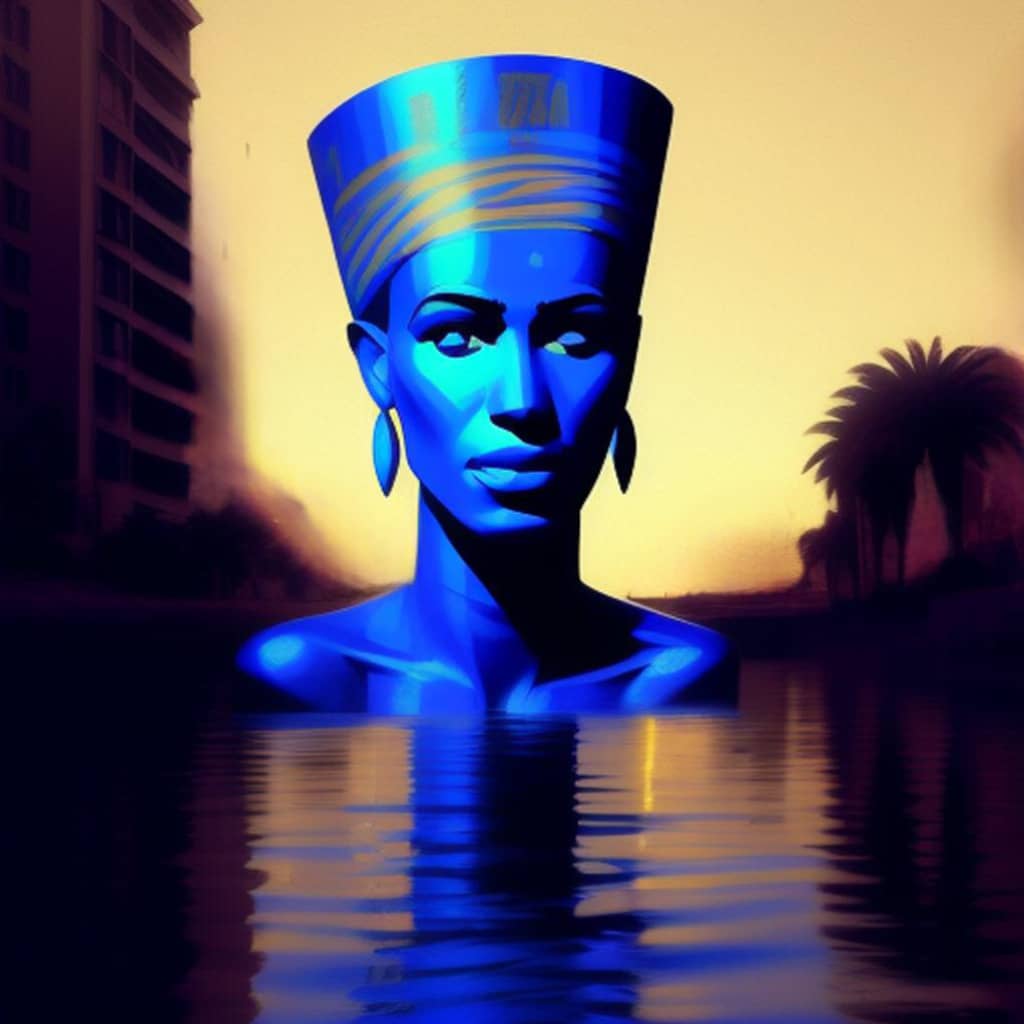
Table of Contents
A mesmerizing blue hue
Lapis lazuli, with its mesmerizing blue hue, evokes the tranquil beauty of the Nile River and holds a special place in the color palette of ancient Egypt.
The River’s Reflection
Just as the Nile River wound its way through the heart of Egypt, lapis lazuli’s deep blue mirrored the tranquil waters that sustained life in this ancient civilization. Its shade captured the ever-changing play of light on the river’s surface, reflecting the sky and creating a serene connection between earth and heavens.
Symbolism of Divinity
Lapis lazuli was more than just a color; it was a symbol of divinity and the celestial realm. Just as the Nile was essential for Egypt’s prosperity, the color blue was associated with life-giving forces and divine presence. Lapis lazuli adorned jewelry, sculptures, and even the tombs of pharaohs, carrying a message of connection to the gods and the afterlife.
Journey Beyond the Horizon
In the Egyptian imagination, the Nile represented not only a physical river but also a spiritual and cosmic journey. Lapis lazuli, with its heavenly blue, spoke to the journey beyond the horizon, where the earthly and the divine converged. It was as if the color held within it the secrets of the celestial realms that stretched beyond the Nile’s waters.
A Bridge to Immortality
The enduring nature of lapis lazuli paralleled the timeless presence of the Nile. This color adorned precious artifacts meant to guide the deceased in the afterlife, a journey that was intricately linked to the cycles of the Nile’s flooding and receding. Lapis lazuli infused these objects with an air of eternity, suggesting a connection between the earthly and the eternal.
Harmony of Elements
Lapis lazuli’s incorporation into art and adornments was a reflection of the Egyptians’ reverence for the natural world. The color’s inclusion was not simply a decorative choice; it was a deliberate harmony between human expression and the hues of the environment. Just as the Nile was integral to Egyptian life, so too was lapis lazuli woven into the fabric of their artistic heritage.
Conclusion: A Nile in Color
Lapis lazuli, the color of the Nile, transcended mere aesthetics to become a bridge between the terrestrial and the transcendent. Its deep blue captured the essence of the river, symbolized divinity, and whispered of cosmic journeys. Like the Nile itself, lapis lazuli flowed through the art of ancient Egypt, carrying within it the beauty and mysteries of a civilization that found profound significance in every shade and hue.
Shop Corner
Color lapis lazuli On Amazon
Enjoy the beauty of the Egyptian color palette!
Sources openai Language models, aitrot, picsart and mib
Embark on a journey into the realm of affiliate marketing and craft your own website within a vibrant, supportive community. Join me in this adventure, where you can begin as a free starter and stay as long as you desire. Enjoy complimentary hosting and foundational teachings to set you on your path. For those with advanced skills, opportunities to elevate your expertise await. Take a moment to explore and witness the magic for yourself!




